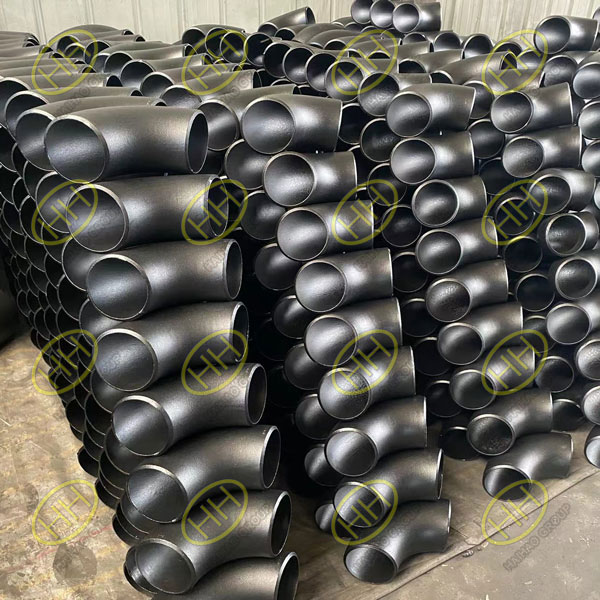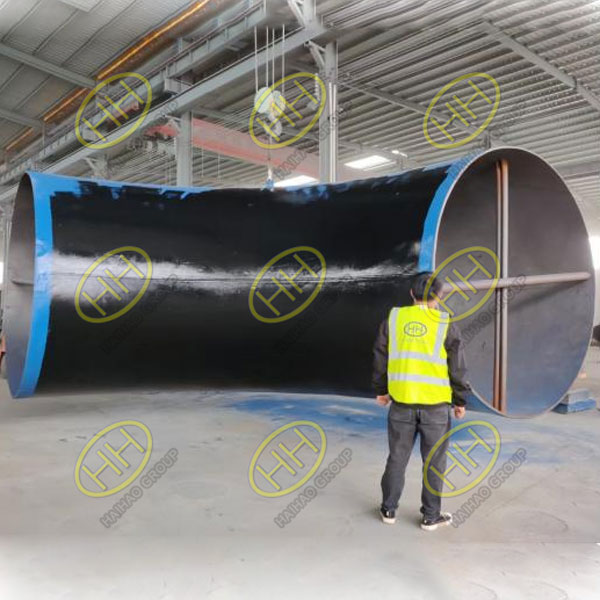The difference between the production process of seamless pipe fittings and welded pipe fittings
In the realm of pipe fittings, two primary manufacturing processes stand out: seamless and welded. Understanding the differences between these methods is crucial for selecting the right components for various industrial applications. Let’s delve into the distinctive production techniques of seamless and welded pipe fittings.

A234 WPB carbon steel elbows
Seamless Pipe Fittings:
Production Process: Seamless pipe fittings are crafted from solid cylindrical steel billets, which are heated and pierced to create hollow tubes. These tubes undergo further processing through hot or cold rolling to achieve the desired dimensions and shape. The absence of seams or joints in seamless fittings ensures superior strength and integrity.
Material Handling: The manufacturing of seamless pipe fittings involves the use of high-quality steel billets that undergo precise heating, piercing, and rolling processes. This meticulous handling ensures uniformity in composition and mechanical properties throughout the fitting.
Advantages:
Seamless pipe fittings boast exceptional strength and resistance to pressure, making them ideal for high-pressure and critical applications.
The absence of weld seams eliminates the risk of weak points, enhancing durability and reliability.
Seamless fittings offer smoother internal surfaces, reducing friction and enhancing fluid flow efficiency.

Custom large size welded elbows
Welded Pipe Fittings:
Production Process: Welded pipe fittings are formed from flat steel plates or coils, which are shaped into cylindrical tubes and welded along the seam. The welding process involves various techniques such as electric resistance welding (ERW), submerged arc welding (SAW), or gas tungsten arc welding (GTAW), depending on the specific requirements.
Material Handling: Welded fittings are manufactured from steel plates or coils, which are subjected to cutting, forming, and welding processes. The welding seams are meticulously inspected and tested to ensure structural integrity and leak-proof performance.
Advantages:
Welded pipe fittings offer cost-effective solutions for a wide range of applications, providing flexibility in design and fabrication.
The welding process allows for customization of fittings with complex geometries and configurations.
Welded fittings are readily available in various sizes, diameters, and thicknesses to meet diverse industrial needs.
In summary, the choice between seamless and welded pipe fittings depends on factors such as operating conditions, pressure requirements, and budget considerations. While seamless fittings excel in high-pressure environments and demand uncompromising strength and reliability, welded fittings offer versatility and cost-effectiveness for less demanding applications. By understanding the nuances of their production processes, industries can make informed decisions to ensure optimal performance and efficiency in their piping system.

